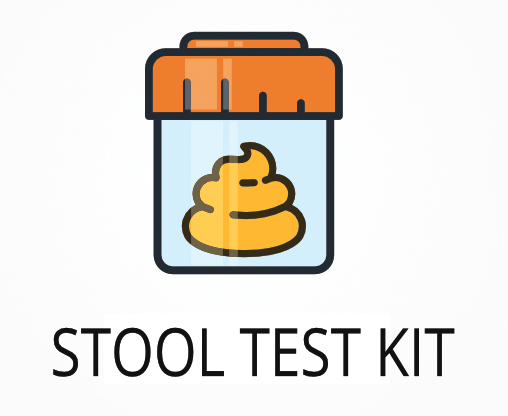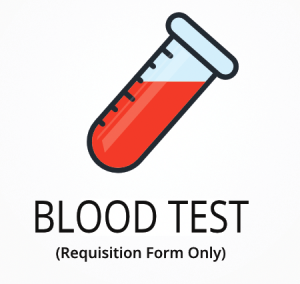Ordering the DNA Stool Test | Comprehensive GI Effects | Canada
Ordering the DNA Stool Test | Comprehensive GI Effects helps people find out what is happening in their digestive system by checking for bacteria, yeast, parasites, and signs of inflammation. This test uses advanced DNA technology to look for imbalances that may be linked to symptoms like bloating, constipation, diarrhea, stomach pain, or food sensitivities. Interestingly, this test can also detect drug resistance genes in bacteria, which can help guide treatment choices.
When ordering this test, you get:
- Detailed analysis of gut bacteria, yeast, and parasites using DNA methods
- Markers for inflammation, including calprotectin and eosinophil protein X
- Assessment of digestion and nutrient absorption
- Detection of drug resistance genes in harmful bacteria
- Evaluation of short-chain fatty acids that support gut health
- One-sample collection with an option for a three-day collection for better parasite detection
Who Should Consider Comprehensive Gut Microbiome Testing
People who have ongoing digestive problems, such as frequent bloating, gas, or changes in bowel habits, may benefit from this test. For example, someone who has tried different diets and supplements for months but still struggles with stomach pain and unpredictable digestion could use this test to find out if there is an underlying issue with their gut bacteria or inflammation.
Ordering this test may also be helpful in these situations:
- Someone with a family history of inflammatory bowel disease or celiac disease
- People who have unexplained food sensitivities or reactions to certain foods
- Those who have recently traveled and developed new digestive symptoms
- People with skin issues, such as eczema or rashes, that may be linked to gut health
- Someone who has taken several rounds of antibiotics and wants to check for changes in their gut bacteria
This test can help identify specific causes of symptoms by measuring markers for bacteria, yeast, parasites, and inflammation, which can lead to targeted treatment and symptom relief. Delaying this test may allow gut imbalances or inflammation to continue, making symptoms harder to manage over time. To get clear answers about your digestive symptoms, consider ordering this test.
Preparing for Digestive Function and Microbiome Analysis
Fasting is not required for this stool test, but you should follow the collection instructions provided in your kit for the most accurate results. Always go by any specific directions from your doctor or healthcare provider to make sure your sample is collected and shipped correctly.
Labs Included When Ordering Your DNA Stool Test | Comprehensive GI Effects
| Test Name | Reference Range | What This Marker Means | Low and High Levels of DNA Stool Test | Comprehensive GI Effects |
|---|---|---|---|
| Gut Bacteria (Commensal/Opportunistic) | |||
| Bacteroides-Prevotella group | Log10 7.0–9.0 | These bacteria help break down plant fibers and support digestion. They are important for keeping a healthy balance in the gut. | High levels mean possible overgrowth, which may cause gas or loose stools.
Low levels mean reduced fiber breakdown and possible constipation. |
| Faecalibacterium prausnitzii | Log10 6.5–8.5 | This bacteria produces butyrate, a short-chain fatty acid that helps reduce inflammation in the gut. | High levels mean increased fermentation, which may cause bloating.
Low levels mean less anti-inflammatory support in the gut. |
| Bifidobacterium longum | Log10 6.0–8.0 | This bacteria helps digest carbohydrates and supports the immune system in the gut. | High levels mean possible over-supplementation or imbalance.
Low levels mean weaker digestion and less immune support. |
| Lactobacillus spp. | Log10 6.0–8.0 | Lactobacillus helps keep harmful bacteria in check and supports digestion of lactose (milk sugar). | High levels mean possible imbalance or probiotic overuse.
Low levels mean less protection against harmful bacteria. |
| Akkermansia muciniphila | Log10 5.0–7.0 | Akkermansia helps maintain the gut lining and may support a healthy weight. | High levels mean possible gut lining irritation.
Low levels mean weaker gut barrier and possible inflammation. |
| Escherichia coli | Log10 5.0–7.0 | E. coli is a normal gut bacteria, but some types can cause infection or diarrhea. | High levels mean possible infection or diarrhea.
Low levels mean less competition against harmful bacteria. |
| Yeast and Fungi | |||
| Yeast (including Candida) | None detected | Yeast, such as Candida, can cause bloating, gas, and other digestive symptoms if present in high amounts. | High levels mean possible yeast overgrowth, which may cause bloating or sugar cravings.
Low levels mean normal yeast balance. |
| Fungi | None detected | Fungi in the gut can sometimes cause digestive upset or immune reactions. | High levels mean possible fungal overgrowth.
Low levels mean normal fungal balance. |
| Parasites | |||
| Cryptosporidium | None detected | This parasite can cause watery diarrhea and stomach cramps if present. | High levels mean active infection.
Low levels mean no infection detected. |
| Giardia lamblia | None detected | Giardia is a parasite that can cause diarrhea, gas, and stomach pain. | High levels mean active infection.
Low levels mean no infection detected. |
| Entamoeba histolytica | None detected | This parasite can cause severe diarrhea and sometimes blood in the stool. | High levels mean active infection.
Low levels mean no infection detected. |
| Inflammation and Immunology | |||
| Calprotectin | <50 | Calprotectin is a marker for inflammation in the gut, often used to help tell the difference between IBS and IBD. | High levels mean active inflammation, possibly IBD.
Low levels mean little or no inflammation. |
| Eosinophil Protein X | <16 | This marker shows immune system activity in the gut, often linked to allergies or inflammation. | High levels mean possible allergic or inflammatory response.
Low levels mean little immune activity. |
| Fecal sIgA | 510–2040 | Secretory IgA is an antibody that helps protect the gut lining from infection and inflammation. | High levels mean active immune response.
Low levels mean weaker gut immune defense. |
| Digestion and Absorption | |||
| Pancreatic Elastase | >200 | This enzyme shows how well the pancreas is working to help digest food. | High levels mean normal pancreatic function.
Low levels mean possible pancreatic insufficiency and poor digestion. |
| Fecal Fat (Total) | <7% | Measures how much fat is not absorbed and left in the stool, which can show problems with digestion or absorption. | High levels mean fat malabsorption.
Low levels mean normal fat absorption. |
| Products of Protein Breakdown (Total) | Varies by age | Shows how well protein is being digested and absorbed in the gut. | High levels mean poor protein digestion.
Low levels mean normal protein digestion. |
| Short Chain Fatty Acids (Total) | 60–120 | These are produced by gut bacteria and help keep the gut lining healthy and reduce inflammation. | High levels mean increased fermentation, which may cause gas.
Low levels mean less support for gut lining and possible constipation. |
| Pathogens and Additional Markers | |||
| Clostridium difficile | None detected | This bacteria can cause severe diarrhea and inflammation in the colon. | High levels mean active infection.
Low levels mean no infection detected. |
| Campylobacter spp | None detected | Campylobacter is a bacteria that can cause food poisoning and diarrhea. | High levels mean active infection.
Low levels mean no infection detected. |
| Shiga toxin E. coli | None detected | This type of E. coli can cause severe stomach cramps and bloody diarrhea. | High levels mean active infection.
Low levels mean no infection detected. |
| HpSA – H. pylori | None detected | H. pylori is a bacteria that can cause stomach ulcers and pain. | High levels mean active infection.
Low levels mean no infection detected. |
| Fecal Occult Blood | Negative | Checks for hidden blood in the stool, which can be a sign of bleeding in the digestive tract. | High levels mean possible bleeding in the gut.
Low levels mean no blood detected. |
| Fecal Lactoferrin | <7.25 | Lactoferrin is a marker for inflammation, often used to help diagnose IBD. | High levels mean active inflammation.
Low levels mean little or no inflammation. |
Reference ranges may change slightly as labs update their methods and guidelines.
DNA Stool Test | Comprehensive GI Effects FAQ
Is there DNA Stool Test | Comprehensive GI Effects testing near me?
This is a home test kit, so you can collect your sample locally and send it to the lab using the provided shipping materials. If you have unpredictable digestive symptoms, being able to collect your sample at home makes the process easier and avoids the stress of finding a nearby clinic; check the draw location link for more details.
How do I interpret the test results?
While your treating physician should review your results, you can also use our one-on-one test results review service with our clinical team for a detailed explanation and next steps.
What is the cost of the test?
The price listed for this test includes standard shipping to you and return shipping to the lab, but draw fees may apply. Ordering this test can help you find the cause of ongoing digestive symptoms and get the right treatment plan sooner.
How often should I retest?
Retesting is usually recommended every 6 to 12 months, especially if you are making changes to your diet or treatment plan, or if your symptoms return. Regular testing helps track changes in your gut bacteria and inflammation, so you can adjust your plan as needed.
How accurate is the test?
This test uses multiplex PCR DNA analysis, which detects bacteria, yeast, and parasites with a specificity of 98% and sensitivity of 97%. TrueHealthLabs.com partners with CLIA-certified and CAP-certified laboratories to uphold rigorous testing standards for dependable results.
Important Notes
None.
Medical Review Board
Reviewed by Jeff Donohue M.D. from Body Logic and Brady Hurst DC, CCCN. Written by True Health Lab’s team of editorial health contributors.
Disclaimer: This information is for educational purposes only and not intended as medical advice. Consult your healthcare provider for personalized guidance.
Why Customers Trust True Health Labs – What People are saying
Also rated 4.6 out of 5 based on 3452 ShopperApproved reviews- See all TrueHealthLabs.com reviews.







